The Supreme Guide to World Time Zones
Time Zones define and establish the appropriate time within individual countries and regions, having an enormous impact on business, communication, and world management. The time zones obey specific rules referring to geographical principles of longitude. In this regard, one should understand how the standard is defined.
Firstly, the Greenwich meridian becomes central in determining the time. The distance east or west from it adds or takes one hour. Under the scientific model of standard time, the zone covers every 15 degrees of the longitude1. The longitude, being the geographical coordinate of the point on the Earth regarding the East or West, helps to reflect the impact of the Sun. In particular, if the Earth rotates 360 degrees in 24 hours, it means that it takes 15 degrees every hour.
Explaining the Concept of Solar Time
Most large countries that span a range of longitudes (e.g., USA, Canada, Russia ) have multiple time zones. This ensures that civil time isn’t too far from the local solar time. The apparent solar time is the time measured by the position of the sun, where noon is the instant when the Sun crosses the local meridian and reaches its highest point in the sky2 (excluding latitudes where the sun isn’t visible for a period of days or months and the eclipse phenomena).
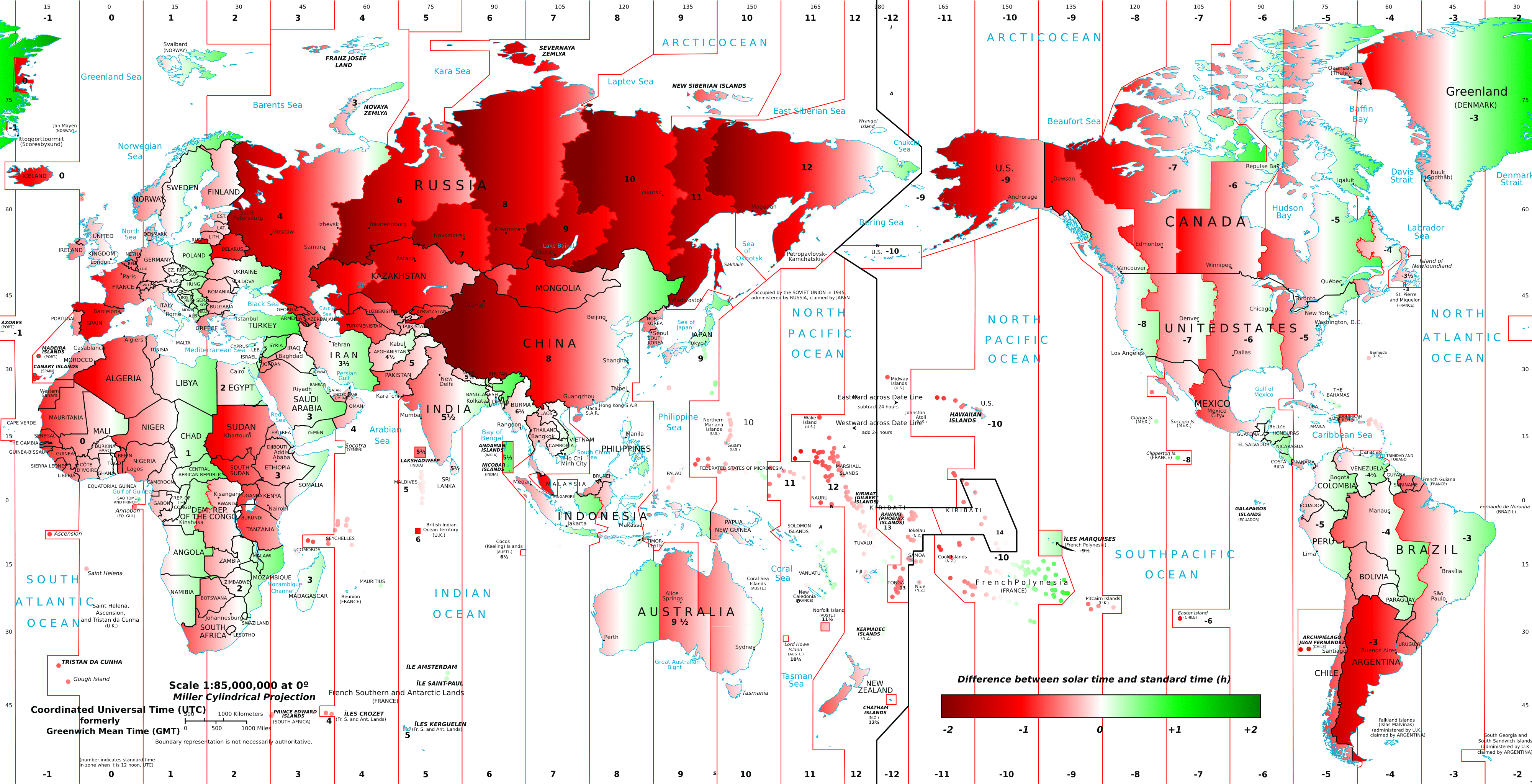
This natural time can be divided into natural solar days, one solar day being the lapse of time between two solar noons when the sun is at its highest. But this solar day varies with the time of the year. The reason for that is that the course of the Earth around the sun isn’t mathematically precise and the axis of rotation is moving too. This being said we can foresee discrepancies in solar time depending on the longitudes we’re examining.
Mean solar time results to be more convenient for timekeeping around the world and it’s more universal since it takes into consideration the actual length of the average day. It differs from the apparent solar time by the following features:
| Apparent solar time | Mean solar time | Civil time | |
|---|---|---|---|
| Description | “Natural time” or the time established according to the sunrise and sunset | The averaged position of the sun according to the results obtained throughout the year | A time used amongst people according to the time zone it is located in and usage of daylight saving time. |
| Time of the day when Sun at is highest | Always 12-noon | May differ according to the equation of time between 11:44 AM and 12:14 depending on the day of the year | Depends on a lot of factors: usage of daylight savings time, the actual geographical location, and the day of the year. |
| Length of the day | It will vary gradually during the year between 23 hours 50 min 39 sec and 24 fours 30 sec | 24 hours | 24 hours |
| When used on a regular basis | Before more precise timekeeping was implemented | Used to be very common until the end of the nineteenth century | Currently is used all over the globe |
As we could see from this table, the main difference between apparent solar time and Mean solar time is precision and convenience in use. Apparent solar time lacks accuracy and is very difficult to adjust the clock to while mean solar time allows to simplify the process of timekeeping and make it more universal around the world and more rigorous.
With time, it transformed into an even more updated way of measuring time — civil time. This solution lets you adjust the timekeeping and take into consideration more factors such as time zone, geographical location, and daylight saving time (if it’s implemented).
Also, in China, where there's only one time zone, the solar time doesn’t correspond to the local time. In Beijing, for example, solar noon occurs at 2:56 PM. We’ll develop this topic further in this article.
Zero meridian: where the New Year is celebrated first
Zero meridian or the prime meridian is situated in the United Kingdom, at the Royal Observatory in Greenwich. It doesn’t have any physical or material representation, but still, it is a nominal line that affects every human being on the Earth. However, some scientists believed that such an important point shouldn’t be placed on the territory that belongs to a certain country.

At the Meridian Conference that took place on 1st October in 1884, two French representatives expressed their concerns stating that the placement of the 0 meridians shouldn’t be influenced by any country and must be a neutral place that doesn’t belong to anyone3. Although this worry is understandable, during the conference there was made a decision that the prime meridian should cross an observatory of the first order. This condition was fulfilled only by a few places in the world: Berlin, Paris, Greenwich, and Washington. And as we know now, Greenwich was the one to become the prime meridian.
Even though Great Britain happened to be right on a zero meridian, this country doesn’t keep GMT +0 throughout the year. In summer they switch their clocks one hour ahead from the Standard time and set GMT +1.
Hence, basically the first seconds of the brand new day first hit a zero meridian, and therefore, the new day begins in the countries that are located there.
And there are many of these. A lot of African countries such as Burkina Faso, Côte d'Ivoire, The Gambia, Ghana, Mali, Guinea, and so on, are situated right on the prime meridian and belong to the 0-time zone.
Accordingly, these countries are also the first ones to celebrate the new year since the new day, and thus new year as well reaches these regions first and moves evenly throughout the globe during the next 24 hours until the whole world has stepped into the new year.
The calendar day and travel
The international date line, geographically located in the Pacific Ocean, determines the change of the calendar day. If a person crosses the line traveling westward, for him or her, it will be the next calendar day in the place of destination.
At the same time, if the person’s movement contemplates crossing in by flying eastward, he or she would return to the previous calendar day at the destination point4. By that, when a person flies from Honolulu to Tokyo in the morning, Tuesday becomes Wednesday. Besides, all timetables are adjusted not only to this principle but to all of the time zones, daylight saving time, and random offsets.
GMT or UTC?
Greenwich Mean Time (GMT) is the solar time at Greenwich at 0° longitude. Civil time doesn’t always match the exact GMT. Coordinated Universal Time (UTC) is used to substitute GMT with the more precise and rigorous determination of time. The main feature that differs UTC from GMT is the way of keeping track of time based on a 24-hour system that starts counting time from midnight.
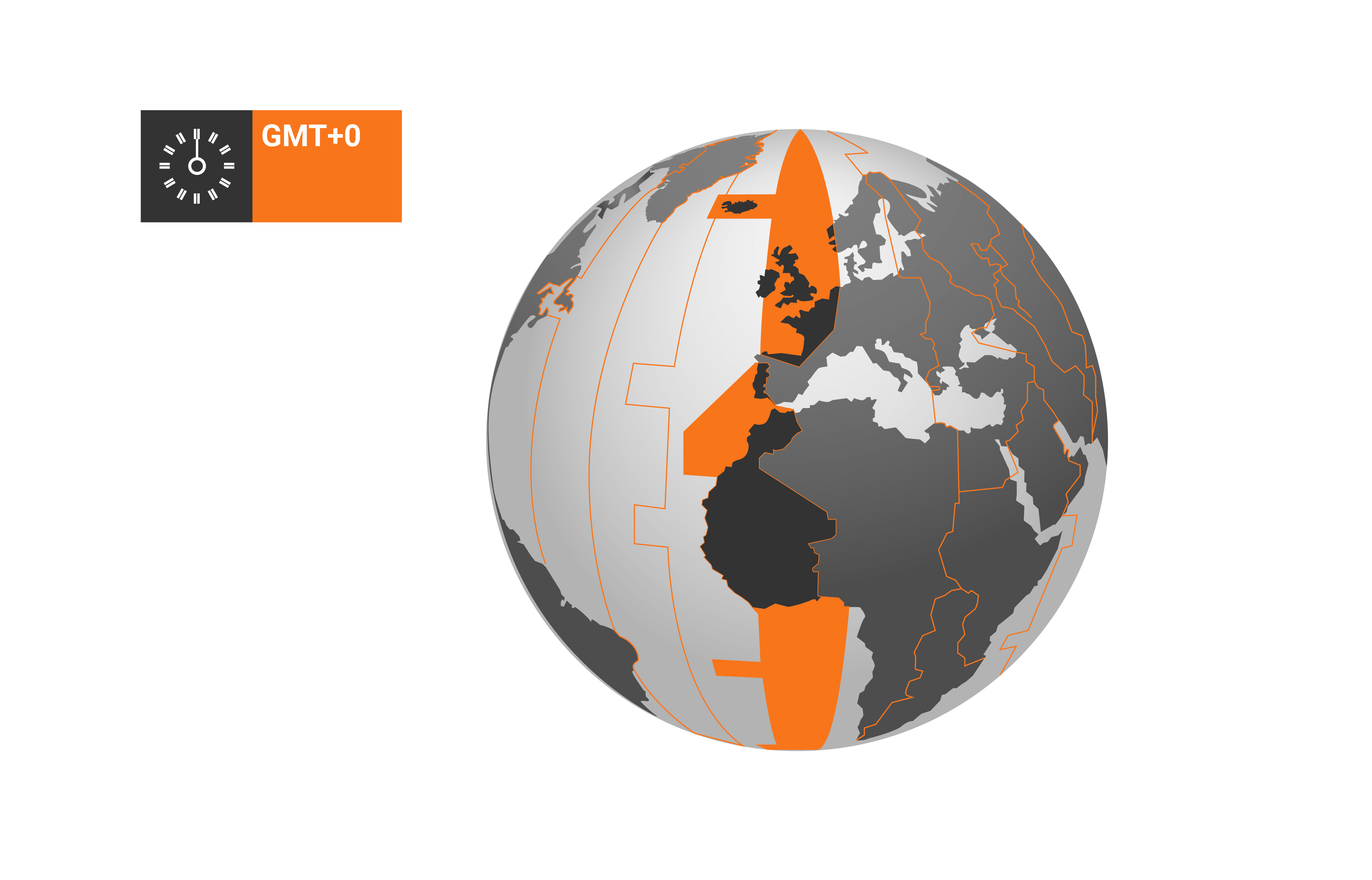
For keeping a track of the UTC time, the specific atomic clocks are required. The frequency cycles used in these clocks help to achieve the most precise measurements of time.
In case of GMT, the main goal of UTC is to designate the universal time zones order and its correlation among the countries around the world.
More information about UTC and its difference with GMT
How time zones work around the world nowadays
How many time zones are there in the world?
The acceptance and application of the idea of time zones took almost a century. Initially, the world was divided into 24 standard time zones which extend from the South Pole to the North Pole. However, due to different geographical, social, and political reasons, the time zones may deviate from the universal standards and recommendations set by international institutions. Governments often set time differently. They try to reflect not only the positions of the sun regarding the surface but inner processes within the regions. Some countries have colonial past and territories miles away from the governing center set in the same time zones. Others are extremely large but have only one time zone (China), causing many problems to locals. That’s why there are many more than 24 time zones, because every country may have a particular standard time zone, which is convenient for its international cooperation.
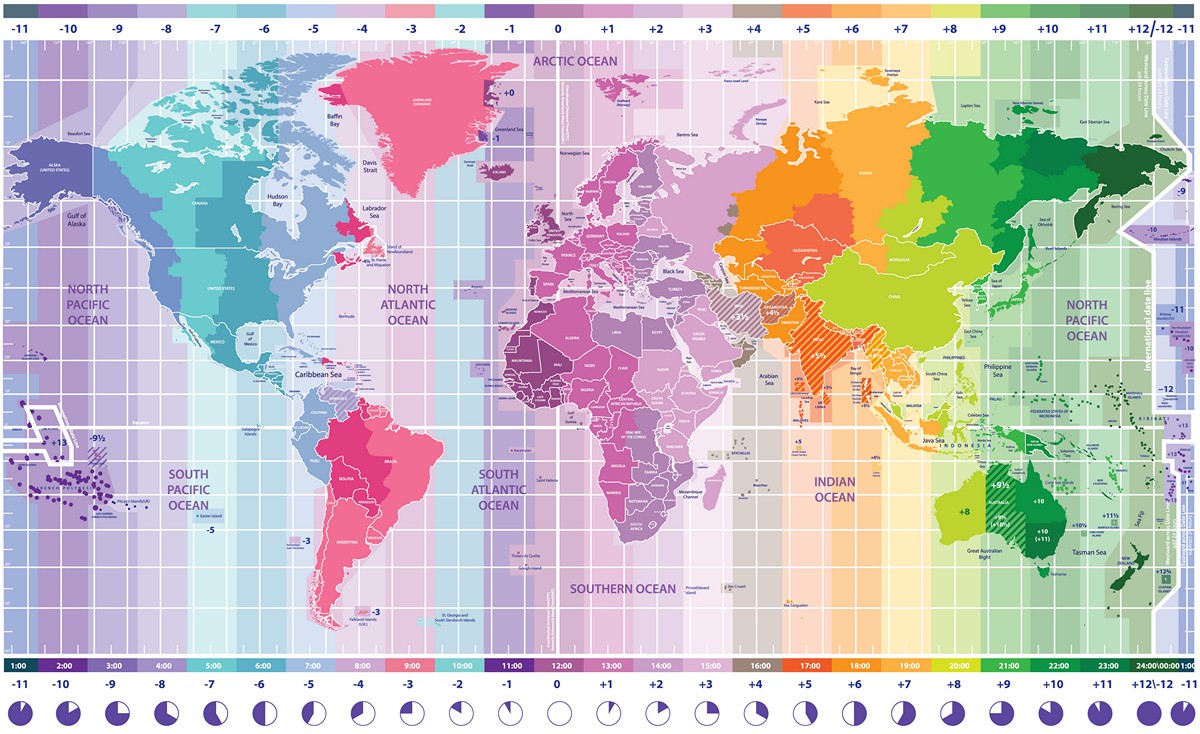
According to our list of world time zones which is based on IANA time zone database, there are about 200 time zones in the world.
We’ll give a brief overview of what the actual time zones are around the world and how they work in reality.
Europe Time Zones
The current time system of Europe is concerned with 3 different time zones, not taking into account the Summer Time. They refer to Western European Time, Central European Time, Eastern European Time.
The Europe Time Zone map and more information on European time zones.
How many zones are there in the United States
The modern United States is known to have nine time zones. The legal system defines them and reflects nine different parts of the United States. Subject to the law, there are Eastern, Atlantic, Mountain, Central, Pacific, Alaska, Hawaii-Aleutian, Samoa, and Chamorro zones5. They span all over the country and refer to offsets ranging from UTC-11 to UTC-4 and correspond to the vast size of the United States.
However, one should understand that some of them are only applicable to certain small territories, while almost the whole country is subject to the six time zones. In this regard, an American can outline the following zones, where the majority of the population lives: Eastern (UTC-5), Central (UTC-6), Mountain (UTC-7), Pacific (UTC-8), Alaska (UTC-9), and Hawaii-Aleutian (UTC-10).
The US Time Zone map and more information on time zones in the United States.
Time in Antarctica
Antarctica contemplates the South Pole, which, due to positioning in the Southern Hemisphere, touches all longitudes and time zones. The time zones in Antarctica are mostly defined by social and international factors. The settlements and scientific stations establish time order as each station represents a certain country.
Also, sometimes Antarctic stations set the time in accordance with the zones of the closest countries. There are not so many permanent bases but those which work bring variety to the time zones regulation.
Specifically, the U.S. Palmer station uses UTC-3 Chile Summer time zone; the Norwegian Troll station applies Central European Time zone (UTC+2); the Australian Mawson settlement follows UTC+5, while the Davis base and Casey station have UTC+7 and UTC+11 respectively; the Russian Vostok station has UTC+6; the Argentinian Carlini Base is under UTC-3; the Italian Mario Zucchelli station is subject to New Zealand UTC+13 standard6.
Asia Time Zones
In comparison to Antarctica and even Europe, Asia has much more population and territory. It makes the issue of time zones in Asia even more crucial. China, India, and Russia have one of the most extensive indicators of population and territory. The Asian countries provide compelling cases of using UTC, having the offset in minutes, and not in hours as the general practice contemplates. Despite all the peculiarities, the time zones of Asia are defined by the political and administrative needs of the states.
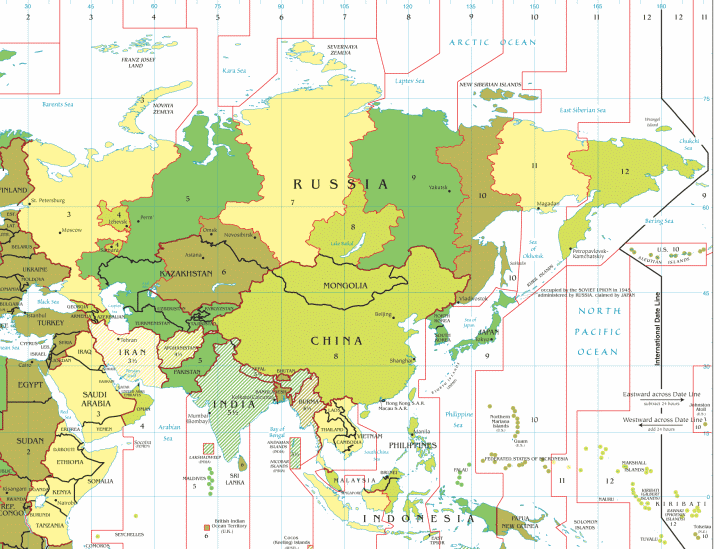
Skewing Time Zones
One of the explanations for the skewing time zones is that the countries cross the time zones. For example, the border between India and Nepal provides a 15 minutes difference, as India has UTC+5.5, while Nepal, being located a bit further to the East, follows UTC+5.75. The explanation is simple as the countries span across the +5/+6 line. Burma, Afghanistan, and Iraq experience similar issues having the UTC+6,5, UTC+4,5, UTC 3,5, respectively. Many may question their approach. Nonetheless, it works well for them.
Other compelling cases are provided by Russia and China. They are countries with an enormous population. In this regard, Russia has 11 time zones expanding from Moscow to Kamchatka through the Caucasus. Also, some nations take the whole continents, like Australia. It made the government establish three time zones Eastern Standard Time (UTC+10), Central Standard Time (UTC+9.5), Western Standard Time (UTC+8)7. Such a fact underlines that the whole continent is unlikely to live under one time zone. By that, the geographical principles make timekeeping more complicated in these countries due to their location and size.
Nonetheless, geography is not the only reason for the skewing of time zones. There are political factors, as well. The example of China and North Korea are exciting to observe. China, despite crossing five time zones, has a standard established in 1949, which refers to UTC+8. It is hard to imagine that the nation of such size lives under a one-time zone.
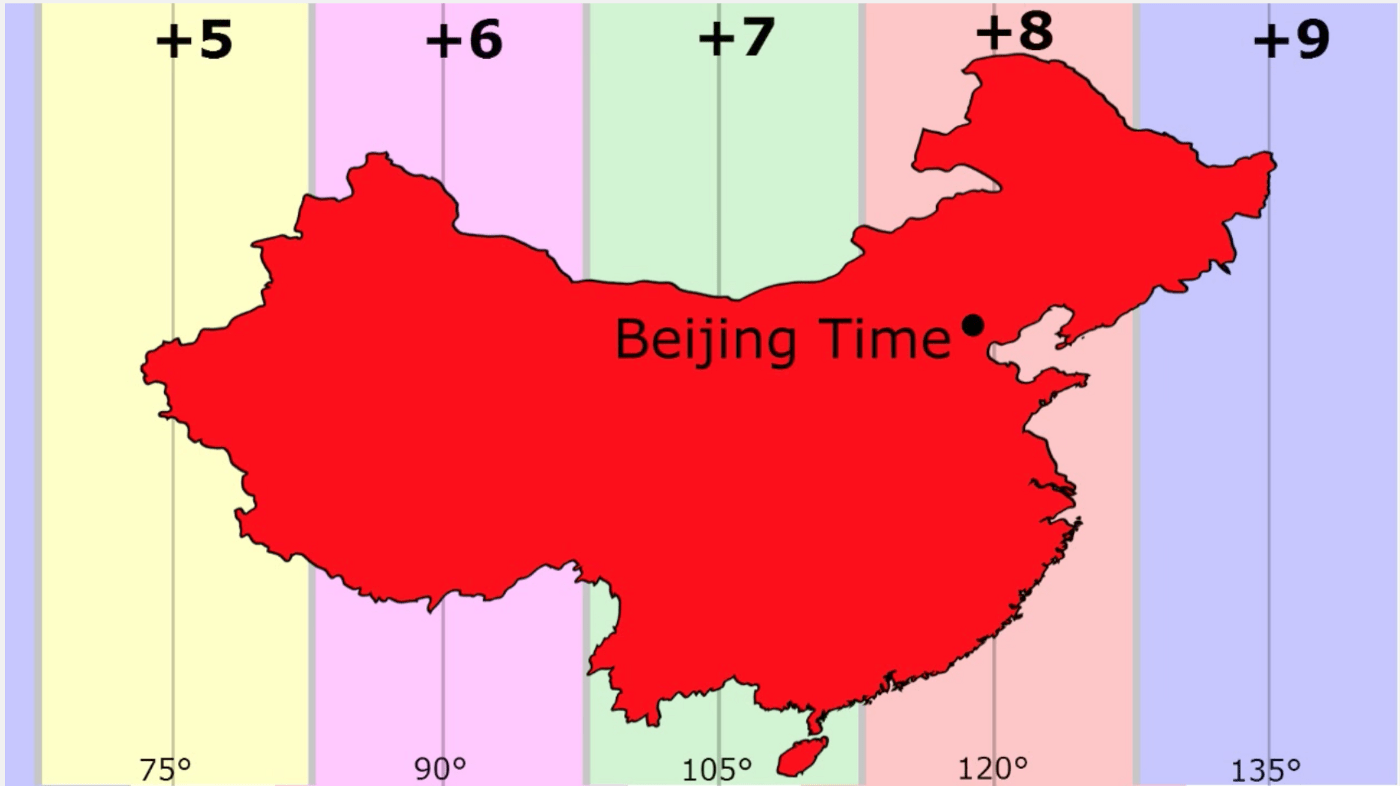
Indeed, it leads to the fact that one may observe the sun rising at 9 am in winter. And the explanation is quite surprising. Before 1949, there were five time zones, while the government established the one to support the myth of unified China. Another political decision refers to North Korea. Although the decision did not act long, they switched time to UTC 8+30 in 2015 to underline their independence from Japanese rule after the Second World War. It shows how Asian countries used the time for their political interests, not considering the problems it may cause for people. In the end, the skewing of time is a phenomenon that has its natural and artificial causes and may create concerns for the population.
Which organizations regulate time zones?
It is a serious task to regulate and provide countries with proper timekeeping all around the world. That’s why a lot of organizations have appeared to be in charge of this duty.
For example, the United States of America is provided with services of timekeeping by two federal agencies: The National Institute of Standards and Technology (NIST) and the United States Naval Observatory (USNO). These organizations make sure to keep the clocks synchronized and the time updated 8.
Also, another area that is highly affected by time changes is transport. Nowadays technologies allow us to move from one time zone to another in a matter of a couple of hours. And this system is very complicated and requires a proper regulation that would help to avoid any confusion or possible mistake caused by misinterpretation. For this reason, the Department of Transportation (DOT) takes an important part in timekeeping as well, by regulating it and establishing standards to follow.
This coordinated time scale is maintained by the Bureau International des Poids et Mesures (BIPM). The BIPM is an international organization established by the Metre Convention, through which all the Standards related to the time measuring are discussed and implemented on the worldwide level.
The International Earth Rotation and Reference Systems Service (IERS) is the institution responsible for maintaining global time and reference frame standards, notably through its Earth Orientation Parameter (EOP) and International Celestial Reference System (ICRS) groups.
How time zones affect people
Even though the system of dividing the surface of our planet into 24 sectors-meridians is very clear, in reality, the implantation of this system has suffered some changes and adjustments in some countries.
Although China is quite a big country with a large population and on top of that, geographically it occupies 4 time zones. But after the revolution in 1949, Beijing which is UTC+8 turned into a new capital of the country and became a national time center. This means that in western China the civil time used by the government is out of step with the local solar time. In the city of Kashi in the far west of China, the Sun is on average at its highest in the sky at 2:56 PM. Obviously, the territory of this size and amplitude is very difficult to be placed all in the same time zone.
As a consequence, the day begins very late in some parts of the country so people who live there had to find a solution to adjust their lives to the new time system. Because the official time is so out of step with the rising and setting of the Sun, many of the non-Chinese locals ignore Beijing time and use their own time zone. Some regions just shifted their business hours to a more reasonable time which coincides more with the actual solar time. And some cities even implemented their own unofficial time.
But even after actually implementing and experiencing certain inconveniences, there are countries out there that want to repeat the experience of China. This time, we are talking About India.
On the other hand, switching clock hours forward or backward during the travels abroad has already become a normal thing for the majority of us. But what about setting clock only 30 min ahead? This is exactly the case of Newfoundland. It is a separate colony that is located in Canada. Its official time zone is GMT — 3.5.
But what about traveling through different time zones itself? Well, it’s not that simple either. Jet lag syndrome is a common problem among people who have to travel quite frequently, especially when the trips involve time zone change. Being tired, having problems with sleeping may lead to more concerning problems in the future. So, in case you do have to deal with frequent flights to different time zones, at least make sure to sleep well and maintain good health.
Daylight Savings Time
The framework of Daylight Saving Time (DST) was proposed by Benjamin Franklin, when being in Paris, and is concerned with advancing the standard time within the region or zone by one hour to enhance the amount of daylight time9. In 1784, Benjamin Franklin underlined that the Parisians sleepover the majority of daylight hours, while George Hudson and William Willett, in different times and countries, provided the idea of Daylight Saving Time. The idea of Daylight Saving is simple: the shifts within the time for the purpose of having more sun during the day can positively affect people's work and actions during the day. For instance, Germany used it and adopted the idea to retain energy during World War I10.
It shows that various people thought about the idea of defined time for productive use. The main reasons behind this are simple. They relate to energy saving, leisure opportunities, and harmonization of movement of goods and services, being first used during the First World War. The example of Germany allows showing that the world population gradually accepted it and adopted it when it was practical.
The daylight offered more light resulting in the reduction of electricity use and encouraging people to spend time outside. Therefore, the concept became vital for many countries, affecting their societies and leading to time zones’ shift. As it finds application nowadays, it impacts the existing UTC offset of the zones mentioned above by adding one extra hour. It produces summer versions of the zones. For example, the Western European Summer time would follow UTC+1, Central European Summer Time would equal to UTC+2, while Eastern European Summer time would offer UTC+3. Finally, the Daylight concept expands the established time zones and defines their application regarding the Summer time.
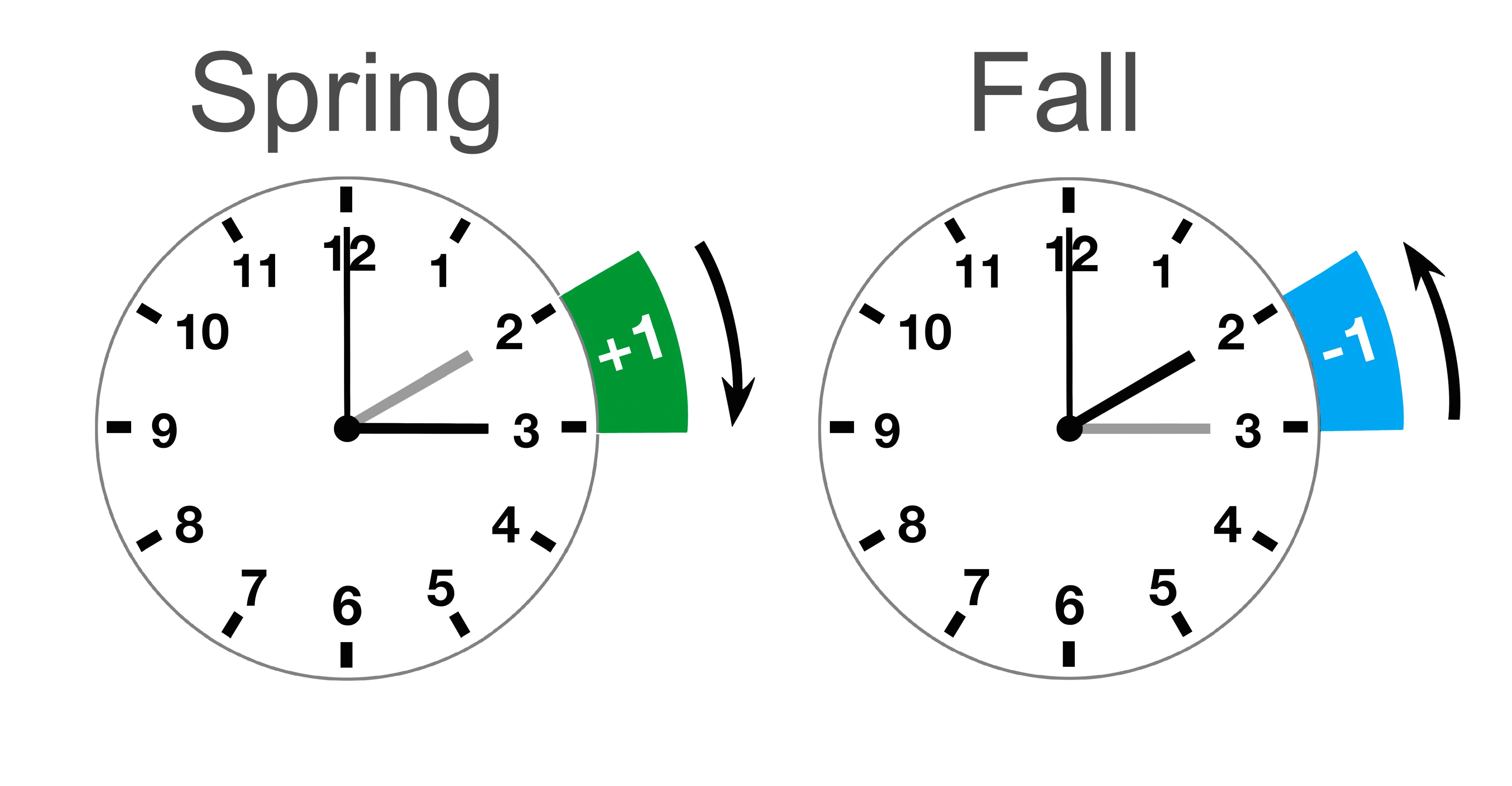
Certain countries abstain from using the particular scheme having their time standard unchanged. For instance, Iceland, Russia, Turkey, China, Japan, and India are not following these concepts. At the same time, in the European Union it is regulated on the legal level. In particular, subject to the current orders, the time is changed on the last Sunday in March to establish Summer time, and on last Sunday in October, to cancel it; nevertheless, the EU members are likely to manage it on their own after 2021.
Notably, some countries have given solutions on this particular matter decades ago. Ireland has adopted the special act in 1971 for the addition of summer time into the previous law on Standard Time11. As a result, summer time appears to be a choice of governments due to economic and public reasons, affecting the time zone system.
We provide more details on how DST works in this article.
Military Time zones
There are twenty-five military time zones. Each of them has a letter assigned which represents a time zone according to Coordinated Universal Time (UTC). The names are taken from the NATO phonetic alphabet which is commonly used in military and other authorities. However, J “Juliet” isn’t used here since it can be mistaken with “I”.
Usually, when the time is expressed in military time format, the letter that represents a certain time zone will stand at the end, for example, 1630H spoken as “sixteen thirty Hotel” or 1600G would be “sixteen hundred Golf” and so on.
Check out the military time zones chart [in this article](/military time).
The History of Worldwide Adoption of the Time Zones
The history of Greenwich Mean Time takes us back to the discovery by Christopher Columbus and the geography treaties that eventually gave birth to the measurements of the Earth in terms of longitudes and latitudes. As soon as astronomers began measuring time according to the position of the stars, it became evident that the time can’t be the same everywhere.
In the 18th century, important countries calculated the time beginning from their own capital. As so the Paris meridian, the Berlin meridian, the Copenhagen meridian, and the Greenwich meridian co-existed and there wasn’t any global consensus. Until 1884 when 22 countries agreed about the Greenwich meridian being the prime meridian for the calculation of global time.
When time zones were introduced
Despite the necessity of standardized time, people could not agree on it for a long time. The first place for debate became England, where the railroad community started their fight for the general rules for all cities. They were the first to apply the standard time within the boundaries of the country. In particular, the Railway Clearing House, the transportation institution in Great Britain, accepted Greenwich Meridian Time as universal within the whole railroad system of the country in 1847.
It sparked the transition within the public sphere in the next 10-15 years. It is the amount of time needed to recognize the change on different levels. However, it resulted in the legal action just 33 years later, when Britain accepted it as the national standard in 1880. The revolution in timekeeping resulted in the proliferation of ideas, and very soon, it became a standardized time for the whole world.
Although having progressiveness and rapid development, the U.S. came to this solution a little bit later. It experienced the problem of the different time within the states and cities as well. The situation in the United States was much more tricky and had more confusion. It is concerned with the enormous size of the country, contemplating the existence of different time zones and autonomous time centers.
There are explicit examples from different sources underlying the pain of travelers and identifying the process of change. For instance, there were different time schemes, as there Michigan and Illinois had 27 local times, while Indiana had 23. It supports the idea of chaos caused by following the sun and adjusting a clock to it. Interestingly, Pennsylvania Railroad utilized its Columbus, Ohio, time for its district in Chicago12. The proposal of the solution did not come easily. The main reason was that railroads did not consider the issue seriously in the beginning and rejected the ideas of group scientists from Massachusetts or such figures as Charles F. Dowd, who represented an idea in 1869, being a decade ahead13. Another supporting concept is that the railroads’ managers and administrators usually had no education and did not suggest science as the answer, increasing the gap between the scientific community and railroad owners.
Fleming and Washington Conference
Nevertheless, the breakthrough was inevitable as the railroads had to deal with more and more confusion. One such event happened to Sir Sandford Fleming, a Canadian, who can be considered a Father of Standard Time. After missing the train in Ireland because of the time difference, he developed the aforementioned 24 time zones standard and recommended it to the Royal Canadian Institute in 1879. It brought the issue of the time zones to the new level and became the force for the adoption of the comprehensive system based on the primary meridian.
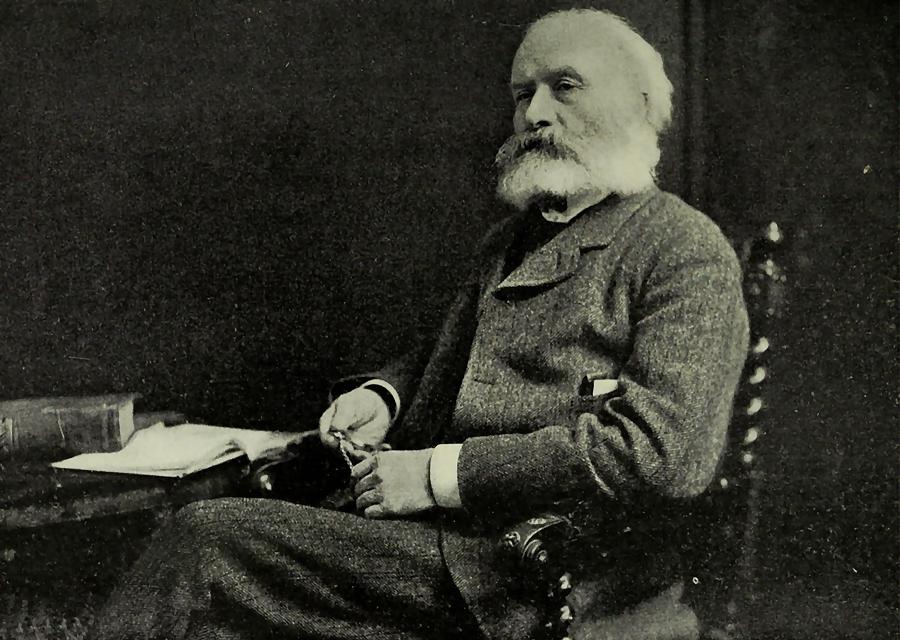
In particular, Fleming was at the avant-garde in 1884 International Prime Meridian Conference in Washington, providing the concepts of Standard Time and Universal Day14. The first was considered by different delegates from Europe and the United States. Although parties to the conference did not accept the idea, it had a recommendation that the meridian of Greenwich should be adopted as an initial meridian for the whole world and that a “Universal Day” can be used. In the end, the idea was not welcomed. However, his ideas were slowly adapting. Even the U.S. railroad community accepted Standard Time in 1883; the Pacific, Mountain, Central, and Eastern zones were appropriately used only by 1895, while the Standard Time Act came into force in 191815. Not all the people met the change positively. For example, there was a case in Illinois in 1883, when a debtor came to a commissioner by the standard time, while the latter followed the previous time rules and blamed the debtor for nonpayment, bringing the case to the Supreme Court. It showed that, for a while, people did not perceive a change unless it was not adopted on the national level.
Time zones needed time
The standard time was not supported by different countries as well. Germany, Spain, and France had their political reasons, where colonies played a significant part. The Brazilian side supported the blockade of the recommendation, while the possible reason might be the economic factor, preventing the export of South American resources16. Clearly, there was the rejection of Fleming's ideas on the preliminary stages as well as its consideration as unimportant. Nonetheless, the countries adopted the standard time later in the 19th century. China defined the “Beijing Time” in 1949 with the power of Mao Zedong17. Besides, one of the latest countries to approve the scheme was Nepal, doing it in 195618. The history illustrates that the idea of Fleming, having high importance for transportation, business and communication in modern times, was far ahead of its time. Several countries adopted it instantly, but for many nations, the time concept was of national matter19. It resulted in the fact that the concept found its application decades later. In the end, Sir Sandford Fleming, presenting his idea at the end of the 19th century, became the Father of Time Zones, whose vision appeared to have a significant impact on the modern world.
References
-
“Coordinated Universal Time (UTC) (CCTF/09-32)” (PDF). Bureau International des Poids et Mesures. Bipm.org ↩
-
Time and Frequency from A to Z, S to So,, National Institut of Standards and Technology ↩
-
Zero Degrees: Geographies of the Prime Meridian, Charles W.J. Withers ↩
-
Selling Destinations: Geography for the Travel Professional, Mancini M., 2004 ↩
-
Antarctica and the Arctic: The Complete Encyclopedia, McGonigal David, 2001. ↩
-
Precise Time, Naval Oceanography portal ↩
-
Time: From Earth Rotation to Atomic Physics, McCarthy Dennis and Seidelmann Kenneth, 2018. ↩
-
The Application of Summertime in Europe, A Report to the DG MOVE, European Commission, 2014 ↩
-
White, Matthew W. “The Economics of Time Zones.”, 2005 ↩
-
Allen, Nathaniel. “The Times They Are A-Changing: The Influence of Railroad Technology on the Adoption of Standard Time Zones in 1883.” The History Teacher, vol. 33, no. 2, 2000, p. 241. ↩
-
Barrows, Adam. The Cosmic Time of Empire: Modern Britain and World Literature. University of California Press, 2011. ↩
-
Morgan, M. K. The Geographical Teacher, vol. 13, no. 2, 1925, pp. 115–120, Jstor ↩
-
Barrows, Adam. The Cosmic Time of Empire: Modern Britain and World Literature. University of California Press, 2011. p.46 ↩
-
Wang, David Der-wei. A New Literary History of Modern China. The Belknap Press of Harvard University Press, 2017.p.551 ↩
-
Gurung, Trishna. “15 Minutes of Fame .” Nepali Times, 2003 ↩
-
Allen, Nathaniel. “The Times They Are A-Changing: The Influence of Railroad Technology on the Adoption of Standard Time Zones in 1883.” The History Teacher, vol. 33, no. 2, 2000, p. 241 ↩